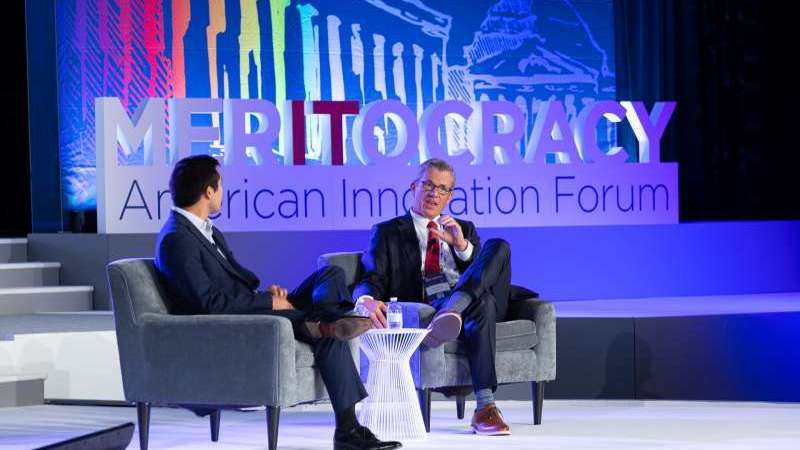
Barton Phillips, vice president for Public Sector at DocuSign, detailed the Federal government’s relatively slow progress to date in digitizing citizen services – and what agencies need to do to operate seamlessly in the digital landscape – during an address at the MerITocracy American Innovation Forum on July 21.
The government, Phillips explained, has come to understand that putting technology at the core of its operations can increase efficiency and reduce operating expenses. At the same time, the White House has put policy muscle behind that goal, although budgetary resources are still not meeting demands of those policy visions.
Digitizing citizen services has become one of the Biden administration’s top priorities. In November 2021, the administration released the Presidential Management Agenda (PMA) which outlines the need for delivering excellent, equitable, and secure Federal services and customer experience – including digitizing citizen services – as one of its top three priorities. The following month, President Biden released the customer experience executive order reinforcing the importance of improving citizen services through digitization.
“When we look at the success metrics laid out by both the executive order and the PMA what we see are pockets of success within the Federal government, but it’s patchy,” Phillips said. “The Federal government is taking too long to digitize citizen services and one of the reasons is because these mandates that are laid out are unfunded.”
Phillips added that directives like the PMA and the executive order explain to agencies the steps they need to take to accomplish the digitization of citizen services, but the lack of funding slows down this process.
“It’s difficult for an agency to receive a mandate, and not have funding associated with that mandate,” Phillips said. “One could argue that going digital would ultimately save the agency money and it does, but getting to that point of seamless digital services requires help.”
Phillips also explained that for Federal agencies to move into a seamless digital government that provides efficient citizen services they need to avoid friction in technology, offer engaging services, and be responsive to evolving needs.
Retiring technology that has been used to deal with information on paper-based forms is just one way that Federal agencies could avoid friction, he said. For example, having applications that need to be printed and mailed out could delay a customer’s attempt to access services, but “moving to a solely digital process eliminates this possible friction,” Phillips said.
Offering engaging services would provide customers with user-friendly guided forms, or assistance to maneuver a digital platform, he suggested.
“Sometimes users won’t know how to get to a service they need so there needs to be an easy-to-use assistance either through guided forms, or artificial intelligence,” Phillips said.
Government services also need to be responsive, which would allow customers to keep track of where they are in the process – from filling out forms to obtaining the services they require.
Phillips added that services also need to remain consistent through all digital platforms whether that be mobile devices or laptops.
“During the pandemic, we saw that many in underserved communities used mobile devices to obtain access to citizen services,” Phillips said. “Federal agencies need to ensure the digital services they offer are consistent regardless of the devices their customers may use whether that be a computer or a mobile device.”
